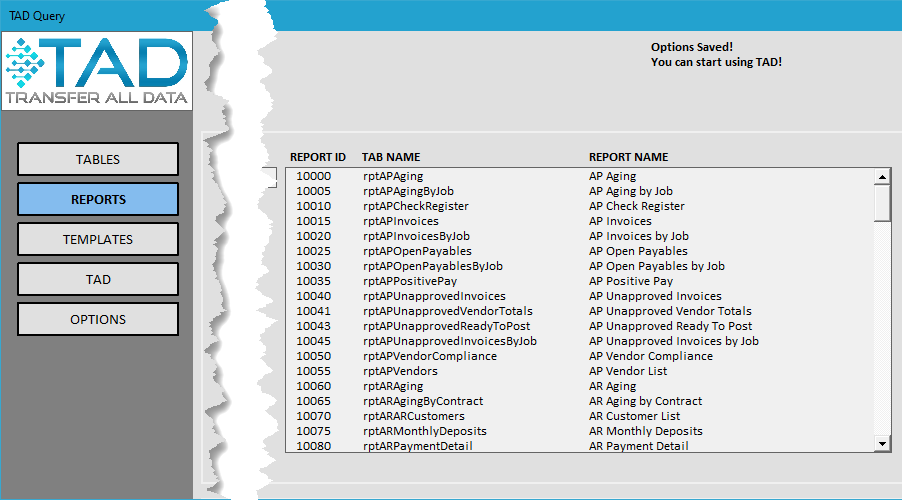Getting Started #
The Excel Add-in is available in both a Signed and Unsigned version.
The Signed version includes a certificate and is required if either of the following options are enabled in your environment.
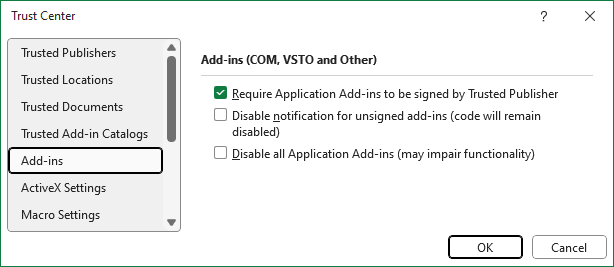
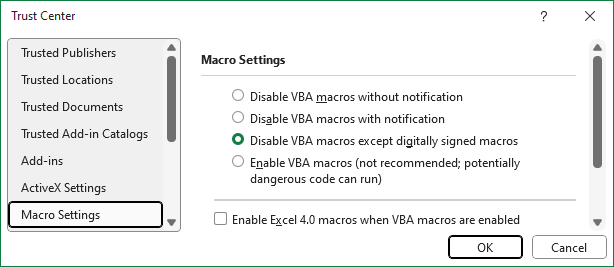
Load the Excel Add-in #
It is recommended to close all open Excel workbooks before continuing.
Open a blank Excel workbook, right-click on Home, and select Customize the Ribbon.

This will open the Excel Options form.
Check the Developer checkbox, then click the OK button.
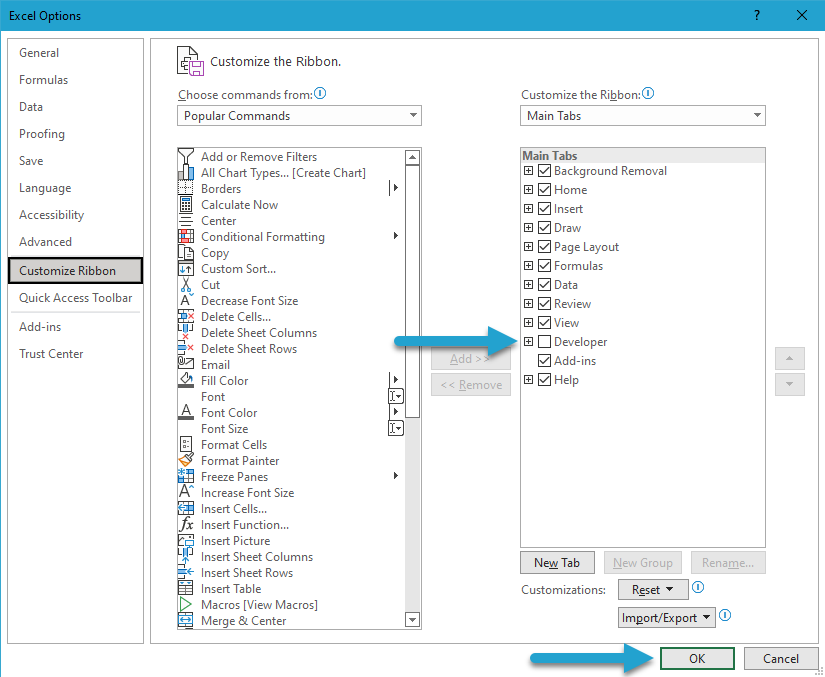
Select the Developer tab on the ribbon, then click the Excel Add-ins button.

Click the Browse button to open your default Excel add-in folder.
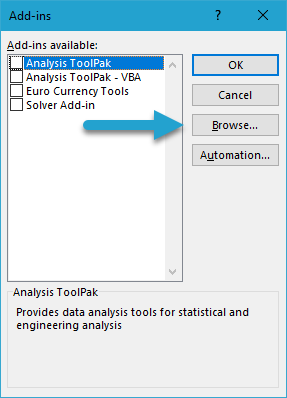
Browse to the Excel add-in file, either in the default installation location or the shared network folder selected during installation.
Default location:C:\Program Files (x86)\Transfer All Data\Transfer All Data
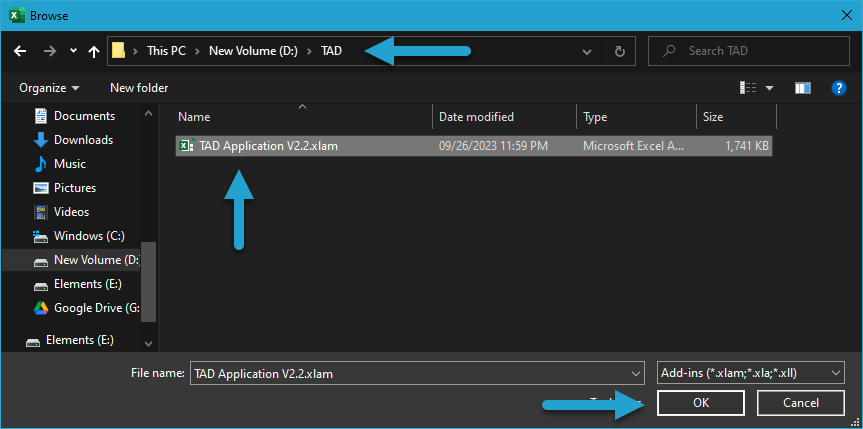
If you see a message asking to copy the file to the Add-ins folder, click No.

The TAD Application V#.# option is now added.
Click the OK button to finalize the setup.
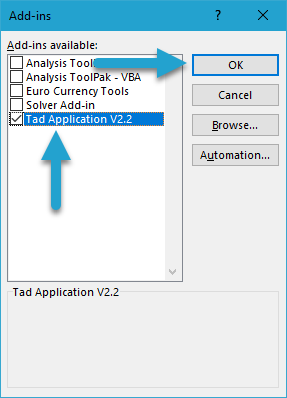
You should now see the TAD ribbon in Excel!

Trusted Location Needed? #
It is recommended to close the workbook and open a new one to verify that the TAD add-in loads correctly.
- If the add-in loads without errors, your installation is complete, and you can start using TAD!
- If you receive a security notice when opening the new workbook, you need to add a Trusted Location for the folder where the add-in is stored.
Microsoft has become more strict with macro-enabled files (such as add-ins), so adding a Trusted Location is likely required.
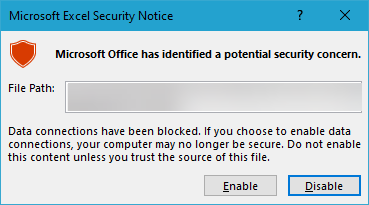
Go to the Developer ribbon and click the Macro Security button.

Go to the Trusted Locations section and click the Add new location button.
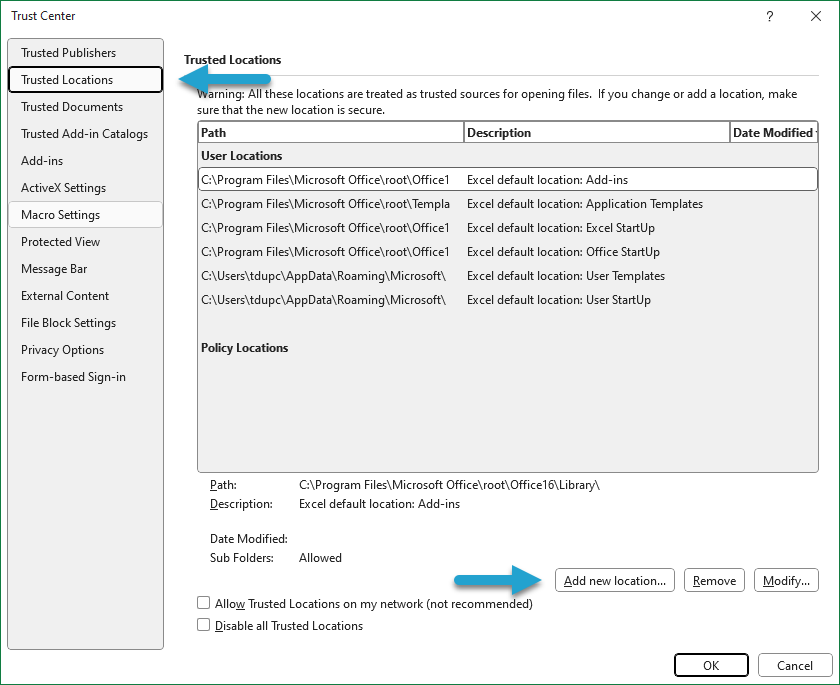
Click the Browse button, navigate to the folder containing your Excel Add-in, and then click the OK button.
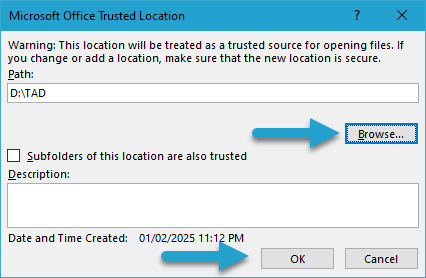
You should see your newly added Trusted Location in the list. Click the OK button to confirm and save the changes.
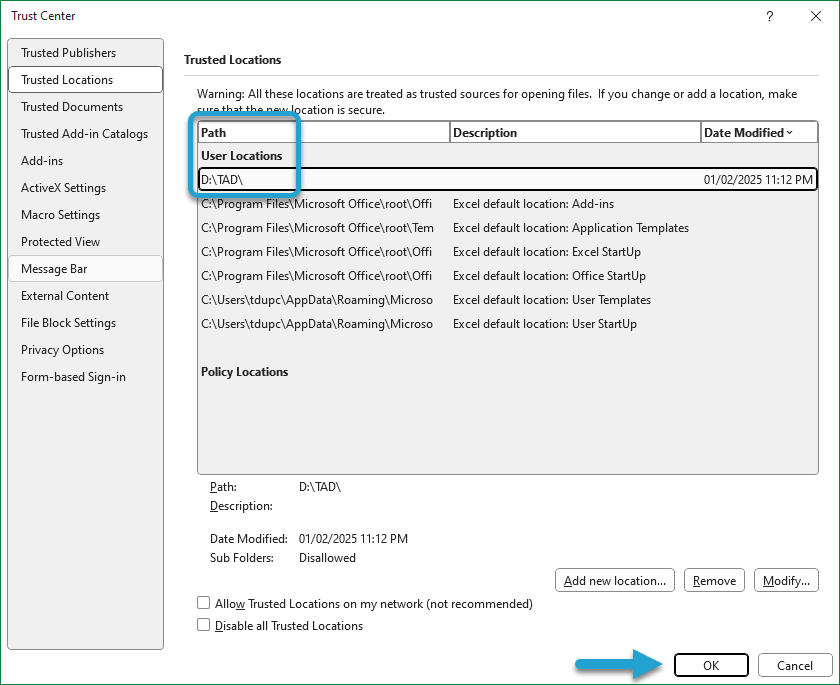
Close the workbook and open a new blank workbook. You should no longer see the security notice.
Get Connected! #
Now that you have the TAD ribbon loaded, you can connect to your server.
Select the TAD ribbon and click the Options button to begin the connection setup.

You will need to fill out the Account Options on the right side of the Options window.
There are two ways to connect:
Cloud-Hosted Vista
- Can use SQL Account.
- Can use Windows Account when accessing Excel in the AVD Remote Desktop.
On-Premise
- Can use SQL Account or Windows Account.
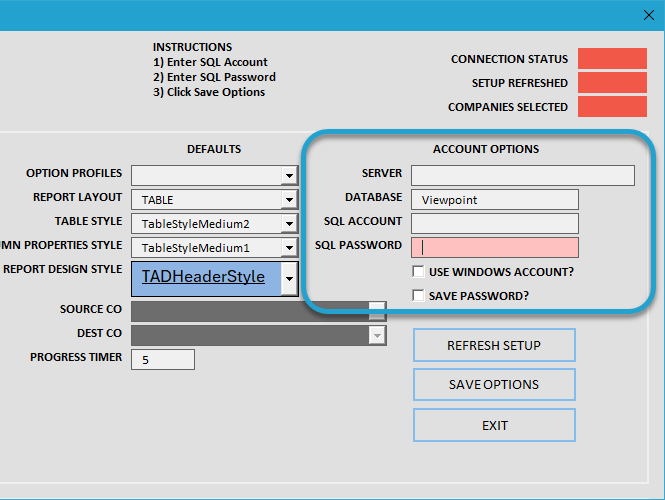
The Server should be the same one used during the installation. (Example: AAAA-sql.viewpointdata.cloud, ####)
- Enter your SQL Account and SQL Password or check Use Windows Account to authenticate.
- If using a SQL Account, check Save Password to enable Auto Connect, allowing TAD to remember your credentials.
- Click Save Options to apply the settings.
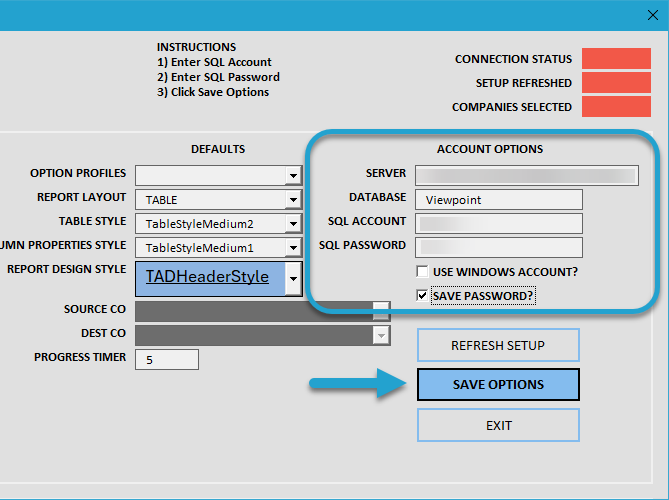
You should see the new instruction messages appear at the top of the Options window.
Click Refresh Setup to download the TAD configurations into the workbook, ensuring all settings are properly applied.
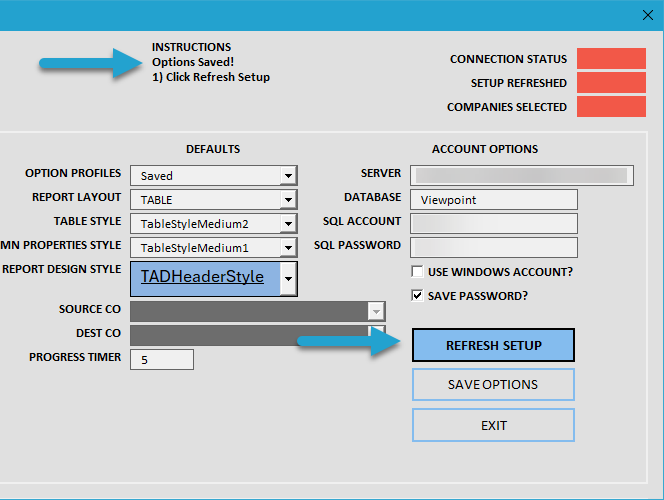
With the configurations downloaded, you are officially connected to TAD.
You can update your default Source Co/Dest Co values if needed. By default, both are initially set to the first company in the list.
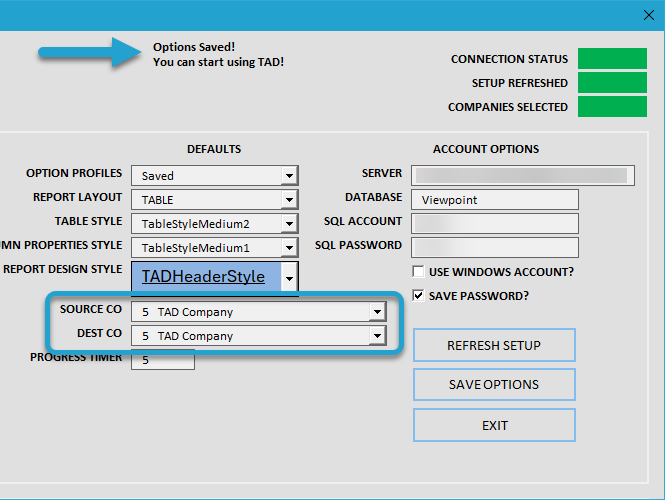
Does This Thing Work? #
If you still have the Options form open, click the Reports button on the left side.
Otherwise, click the Reports button on the left side of the TAD Ribbon.
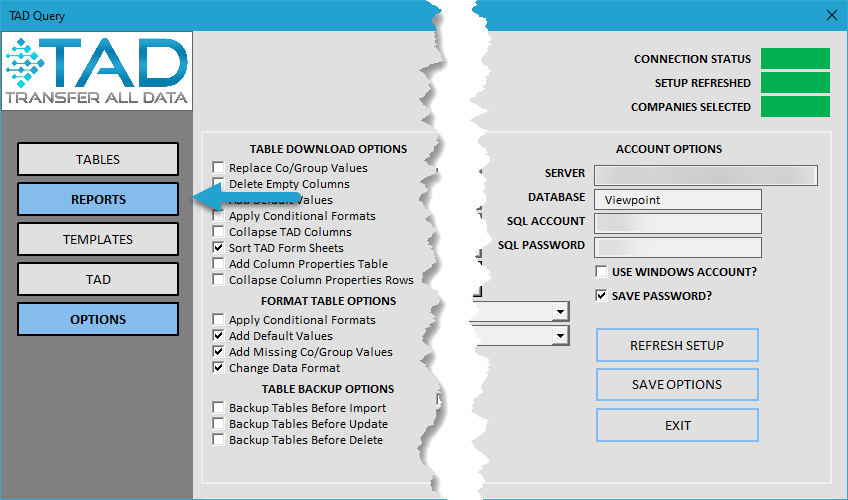
Select the top report, AP Aging, and click Download Selected to retrieve the report data.
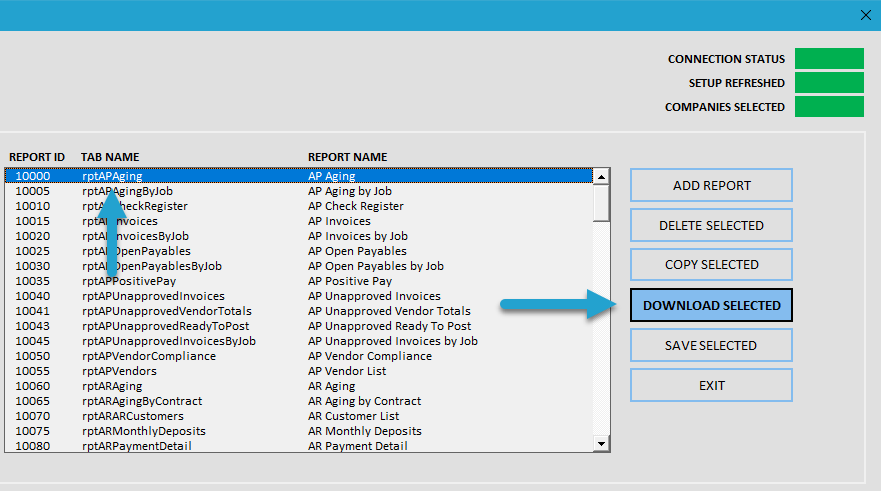
Click the Download button on the Parameters form to proceed with retrieving the report data.
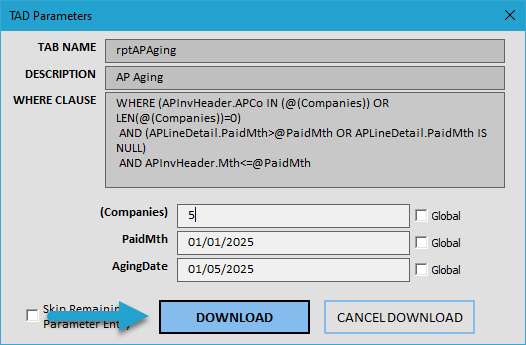
Locate the Attachments column on the right side of the worksheet and select a cell with a value.
Press F4 on your keyboard to open the Attachment List form.
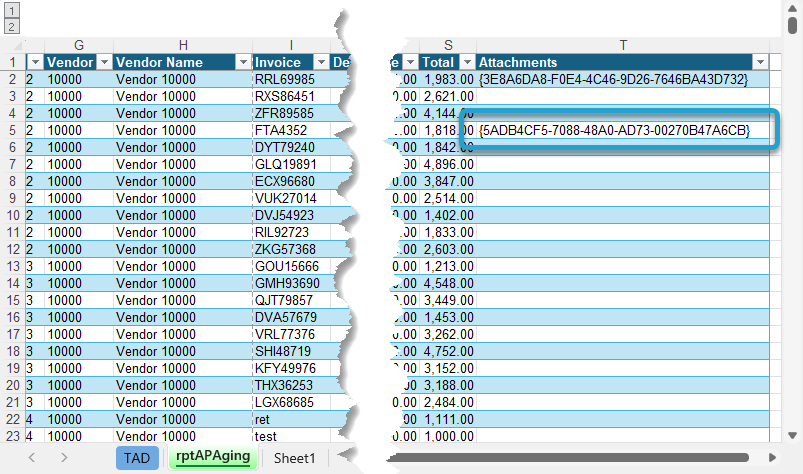
You should see the Attachment List form displaying one or more attachments associated with the selected record.
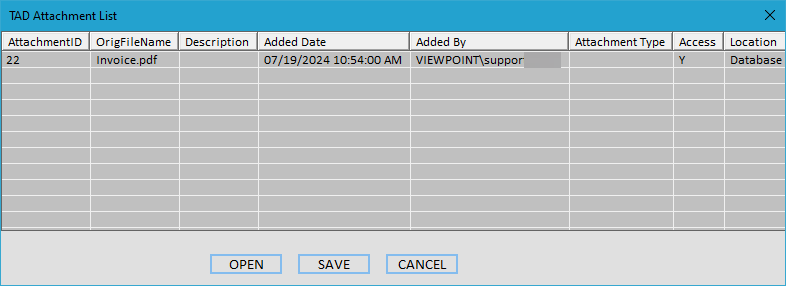
Double-click on an attachment or select it and click the Open button to view the file.
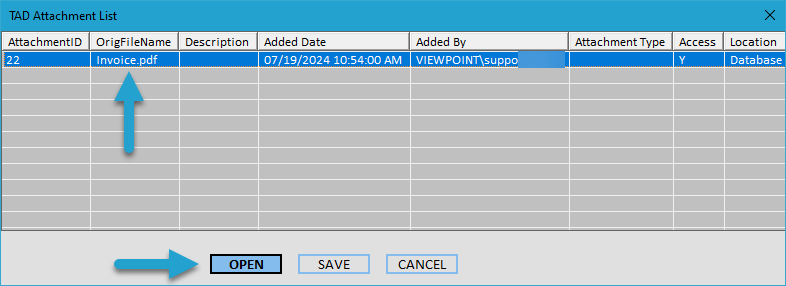
If the attachment opens, then everything is working as expected.
If you receive an error related to permissions, have your Admin follow the Granting Attachment Access guide to resolve the issue.
What is Auto Connect? #
The Auto Connect feature is enabled when:
- Using a SQL Account and the Save Password box is checked.
- Using a Windows Account for authentication.
Using Auto Connect
Next time you want to use TAD:
- Open a new blank workbook.
- Click the Tables, Reports, or Templates button to start your selections.
TAD will automatically connect without requiring you to enter credentials again.
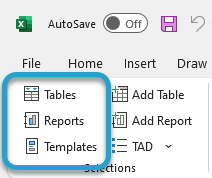
You will receive a prompt stating that saved settings were detected and asking if you would like to auto connect.
Click Yes to connect instantly with one click.
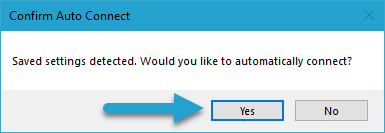
Once connected, you should see the Form layout corresponding to the button you selected (Tables, Reports, or Templates).
